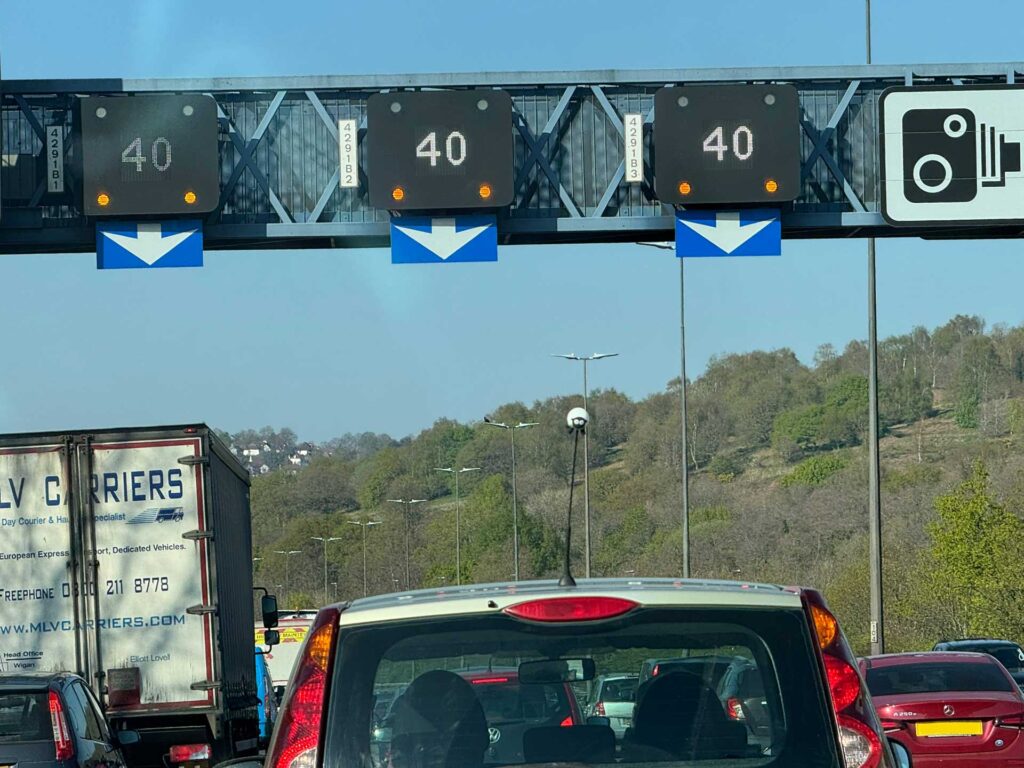Gridlock: From the Severn Bridge to Newport – Why Nobody Is Going Anywhere Fast in Modern South Wales

Opinion Piece Written by Lisa Baker, Editor, News from Wales
From the windswept heights of the Severn Bridge to the congested streets of Newport, commuters across South Wales are finding themselves stuck—literally. What used to be a relatively swift journey from the border into Wales has turned into a daily ordeal of tailbacks, lane closures, and standstill traffic.
The question being asked in cars up and down the M4 corridor – including me as a passenger today – is a simple one: Why has driving in South Wales become such a nightmare?
A Perfect Storm of Pressures
The causes of the current chaos are numerous, and they’re converging all at once.
Let’s start with the M48 Severn Bridge, the historic gateway into South Wales.
Once a marvel of modern engineering, the bridge is now showing its age. Following recent inspections, a 7.5-tonne weight restriction for HGVs will come into force in late May 2025 due to concerns about corrosion in the main suspension cables. This precautionary measure may be necessary, but it will force thousands of heavy goods vehicles to reroute via the M4 Prince of Wales Bridge, putting additional pressure on a route that’s already heaving with traffic AND currently struggling with bridge upgrades, adding to the travel chaos.
Then there’s Newport, a city now synonymous with chronic congestion, particularly around the infamous Brynglas Tunnels—two narrow, aging tubes that have become a bottleneck for the entire region. With no additional capacity and no alternative route for through-traffic, a single breakdown or collision can gridlock the city and surrounding areas for hours.
Today, weather woes added to the road network issues, closing the M48 bridge altogether – meaning my ‘short trip’ to Weston took a mammoth two and a half hours in each direction. It’s not a great welcome to Wales…
No Relief in Sight
The scrapping of the long-planned M4 Relief Road in 2019, once touted as the answer to Newport’s traffic woes, has left a gaping hole in South Wales’ transport strategy. Despite years of consultations and investment in feasibility studies, the controversial project was ultimately deemed too environmentally and financially costly.
Since then, proposals for alternative solutions—such as upgrading public transport, enhancing active travel infrastructure, or creating new park-and-ride schemes—have been slow to materialise. Meanwhile, the number of cars on the road continues to rise.
I’d add that Wales has spent millions on cycle paths, many of which sit unused. I can’t cycle to Weston from my home in Wales. I pay my repayments, I pay my car tax, am I really being unreasonable in expecting to be able to complete what should be a one hour drive in my car?
And don’t even talk to me about climate. While billionaires are sending pop stars like Katy Perry into space and world leaders are travelling to climate conferences by private jet, I am not willing to listen to any of them telling me to get on my bike – YOU FIRST!
Economic and Human Costs
For businesses, the cost of gridlock is far more than just a few extra minutes on the road. Delays in delivery times, increased fuel consumption, and driver fatigue all eat into margins. For commuters, the daily drag is not just inconvenient—it’s exhausting. Time that could be spent at home with family, or even contributing to the economy, is instead wasted staring at brake lights.
There’s also the environmental cost. Idling engines on clogged motorways contribute to poor air quality and increased emissions, undermining Wales’ wider climate commitments.
What Needs to Change?
Experts and campaigners are calling for a joined-up strategy that balances immediate needs with long-term sustainability. That could mean:
-
Targeted upgrades at key pinch points like the Brynglas Tunnels.
-
Improved public transport links to reduce car dependency.
-
Better traffic management systems, including smart motorway tech.
- Rethinking the legislation that prohibits road project that increase car capacity -we need more space!
-
Revisiting plans for freight rail corridors to remove HGVs from the road network.
- And for me: Please, someone, see sense and commission the M4 relief road – NOW!
Most of all, we’re calling for urgency. Because right now, South Wales is grinding to a halt.
Conclusion
From the creaking Severn Bridge to the choked arteries of Newport, South Wales is facing a transportation crisis that’s growing more serious by the day. If infrastructure isn’t modernised—and soon—the gridlock won’t just stay. It’ll get worse.
And for those stuck in the daily jams – including me today, no amount of patience can substitute for a plan.
References
-
M48 Severn Bridge Weight Restriction – National Highways
National Highways announced a 7.5-tonne weight limit on the M48 Severn Bridge starting 27 May 2025 due to cable deterioration:
🔗 https://nationalhighways.co.uk/travel-updates/the-severn-bridges/m48-severn-bridge-weight-restriction -
Press Release on Diversion of HGVs
National Highways details rerouting of heavy vehicles to the M4 Prince of Wales Bridge:
🔗 https://nationalhighways.co.uk/press/m48-to-introduce-weight-restrictions -
Brynglas Tunnels – Overview and Congestion History
A key pinch point near Newport, the tunnels significantly impact traffic flow:
🔗 https://en.wikipedia.org/wiki/Brynglas_Tunnels -
Scrapping of the M4 Relief Road – ITV News Report (2019)
First Minister Mark Drakeford cancelled the £1.6bn project due to cost and environmental impact:
🔗 https://www.itv.com/news/wales/2019-06-04/first-minister-scraps-plans-for-an-m4-relief-road -
Traffic Forecasting Report – Welsh Government
Detailed analysis of congestion patterns on the M4 corridor around Newport:
🔗 https://www.gov.wales/sites/default/files/publications/2017-09/m4-corridor-around-newport-traffic-forecasting-report_0.pdf -
CBI Wales Report – Economic Case for the M4 Relief Road
Business leaders warned that congestion harms economic growth and competitiveness:
🔗 https://www.cbi.org.uk/media/2567/m4-relief-road-cbi-call.pdf -
Collapsible Bollards & Alternative Solutions – Highways Magazine
Following the M4 Relief Road cancellation, alternative traffic management ideas were proposed:
🔗 https://www.highwaysmagazine.co.uk/Collapsible-bollards-among-the-recommendations-for-M4-bottleneck/5450 -
Public Commentary – Reddit Discussion
Commuters vent frustrations about the daily gridlock through Newport:
🔗 https://www.reddit.com/r/Wales/comments/15t2ye6/m4_into_wales_through_newport_tunnels_is_the_most
Image: Lisa Baker





